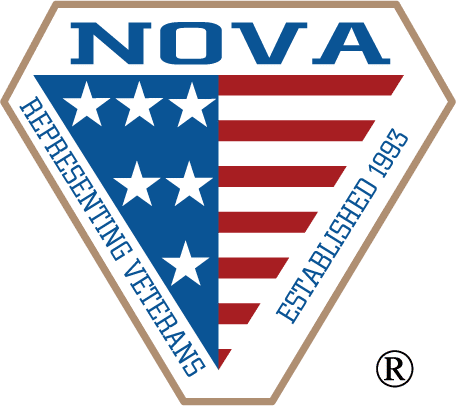The First Step to TDIU Eligibility
If you are a veteran that is trying to win entitlement to Total Disability Based on Individual Unemployability (TDIU) benefits from VA, you need to know about the two prongs to the VA TDIU entitlement test. Almost every disabled veteran must meet both of these prongs. There is a very narrow exception that requires special consideration of the veteran’s case by the VA Director of Compensation Service, but that situation is so unlikely to be of benefit to the average veteran we won’t discuss it here. Suffice it to say, if you plan on establishing entitlement to TDIU, you need to be able to prove both of these prongs.
The first prong of the TDIU test is what we call the schedular requirements test. Per 38 C.F.R. § 4.16(a), “if there are two or more disabilities, there shall be at least one disability ratable at 40 percent or more, and sufficient additional disability to bring the combined rating to 70 percent or more.” So, a veteran with multiple disabilities combined together must have an overall combined rating of at least 70% and one of those disabilities must be 40% or more by itself.
That is a stumbling block for many veterans. We see quite a few veterans seeking individual unemployability benefits because they are not able to secure or follow substantial gainful employment due to one or more of their service-connected disabilities. However, sometimes they may have some work to do before they will pass the first prong of the TDIU test – the schedular evaluation threshold percentages described above. Without satisfying this requirement, in almost all instances VA will not even get to the question of whether the veteran’s service-connected disabilities prevent him or her from obtaining or keeping a job.
What to Do If You Don’t Have One Disability at 40% or More
So, what should a veteran do if he or she does not yet have one disability of at least 40%, even though the overall combined rating may be 70%, 80% , or even 90%?
In that situation, there are two possible strategies the veteran may employ. The one that is best depends on the veteran’s particular situation and a number of different factors.
The two options are either to try for an increased rating on one or more of the disabilities you already have or you can seek service connection for a new disability and achieve a 40% rating for that disability.
Of course, another approach is to do both – try for increases on one or more already service-connected disabilities and seek service-connection on new disabilities as well. This provides more avenues to achieve the necessary 40%, but it obviously can require more effort and potentially expense in the form of medical evidence. As with anything else, you (along with your attorney or VSO if you have one) will need to make a judgment call on how much to focus on a limited number of disabilities or hedge your bets with a broader approach and seeing which one works.
Not All Disabilities Will Help You – See What’s Possible and What’s Likely
Whether deciding whether to pursue an increased rating or service-connection for a new disability, it is important to ask the same question: What rating is possible? That requires some information on the various ratings that are possible for a particular disability and some specific analysis in your particular situation to determine what can reasonably be expected in terms of rating. In short, what is possible and then what is likely?
Here is an example. If you are already service-connected for migraines at 0%, that might be a disability for which you could seek an increased rating. But, what is possible? Migraines are eligible for ratings of 0%, 10%, 30%, or 50%. Any of those are theoretically possible. But, what is likely in your situation? That requires a little more information and analysis regarding the frequency and severity of the migraine attacks. While 50% may be possible under the law, the facts and evidence in your case may mean a 10% or 30% migraine rating is as much as you can likely expect. But, there may be an argument for a 50%, meaning you eventually decide to pursue an increase on your migraines along with some other rated disabilities to maximize your chances of achieving a rating of 40% or greater on one of them. However, at least for purposes of this discussion (i.e., achieving at least a 40% rating for one disability), pursuing service-connection for tinnitus would be of no benefit since the maximum schedular rating for tinnitus is 10%. You would be best served by focusing your efforts on increases or service-connection of disabilities other than tinnitus.
Only Then Do You Move on to the Next Step
By focusing on only those disabilities that have the likelihood of getting you the necessary rating, you can maximize your chances of getting to where you need to be ratings-wise for the initial prong of the TDIU test. At that point, you move on to the “real question” at hand – do your service-connected disabilities prevent you from getting or keeping a job?
Unfortunately, many veterans neglect this first prong of meeting the ratings requirements because it seems so clear to them that their service-connected disabilities prevent them from getting or keeping a job. What those veterans don’t realize is that the real stumbling block is this initial requirement of meeting the schedular requirements of TDIU: one disability at least 40% disabling and a combined rating of 70% for all disabilities. This is where an experienced VA disability attorney can dig into your case and see the real reasons VA is denying the claim and what can be done about it. This is really just an overview presented here; there are some exceptions that we will cover in later articles. In the meantime, if you have questions about your potential entitlement to Total Disability Based on Individual Unemployability (TDIU), please reach out to us for a free consultation with our VA disability team to see if we might be able to help.








